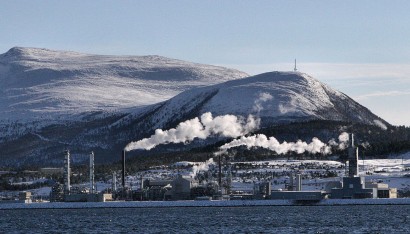Turbine Breakdown & Fire at Equinor Methanol Plant

The Petroleum Safety Authority of Norway (PSA) announced on June 24, 2021, that it had completed its investigation into the December 2020 incident involving a turbine breakdown and subsequent fire at the Equinor Tjeldbergodden methanol plant.
The regulator said serious breaches of the regulations were identified, and that Equinor has now been given an order
The incident occurred on December 2, 2020 in a compressor house, which forms part of the methanol plant and contains equipment for compressing synthesis gas (a blend of hydrogen, carbon dioxide, and carbon monoxide) as well as a steam turbine generator with associated support systems.
During work to adjust the parameters of the regulator which controls steam admission to the turbine generator, a process shutdown (PSD) had to be initiated manually owing to an unexpected response from the control system.
When PSD is initiated, the generator must be disconnected from the power grid and the turbine isolated from the steam network. In this case, isolation from the steam network failed and the backflow of steam at the intermediate pressure level increased turbine rotation. This faster speed caused turbine blades to come lose from the rotor, which then became wedged and stopped abruptly. That caused the shaft to snap between turbine and gear. One result of this breakdown was that components from the turbine shaft and a flexible coupling on the shaft where flung about with great force.
These objects struck piping for the turbine’s lube oil system, which broke and caused a lube oil leak that then ignited. The resulting fire lasted around an hour, but did not spread to other systems in the compressor house. About 1 000 litres of lube oil are estimated to have leaked out.
The PSA’s investigation of the incident found that the incident had a major accident potential and could have caused serious personal injury or death as well as substantial financial loss. No physical injuries were sustained as a result of the incident.
A statement from the PSA said that in the event of a turbine trip, plant operators are supposed to make a physical check of the turbine generator. Had they or other personnel been in the compressor house when the breakdown occurred, they could have been struck by flying components. The latter have also been hurled with great force through the walls of the compressor house and could have hit people outside the building.
Flying components have also hit the synthesis gas plant located in the same building. Had this caused a synthesis gas leak, the outcome could have been an explosion and/or a large fire. On that basis, the PSA’s assessment is that the incident had a major accident potential and could have caused serious personal injury or death as well as substantial financial loss.
The direct cause of the turbine breakdown with subsequent fire was that isolation from the steam network at the intermediate pressure level failed to function as intended during an PSD of the system.
The investigation also identified several elements which have or could have been significant for the incident occurring. These included:
– Information used as a basis for classification
– Failure to handle an impaired barrier function
– Maintenance
– Failure of a system review to pick up design weaknesses
– Technical documentation
Four nonconformities have been identified by the investigation, related to:
– Identifying safety functions and barrier follow-up
– Follow-up of the system
– Documentation
– Safe distance from the fire scene
Two improvement points have also been identified in relation to:
– Unclear how the Tjeldbergodden fire appliance was used
– Unclear performance standard for personnel check (POB) in the plant.
As a result of the investigation, the PSA has ordered Equinor to “identify, initiate and follow up measures to ensure that equipment with a safety function is identified and classified to ensure correct follow-up of its function and proper handling of impairments in order to secure safe operation.” The deadline for compliance with the order is December 13, 2021. The plan for complying with the order must be submitted to the PSA by September 15, 2021.
Source: HazardEx, “Serious regulation breaches identified from investigation into December 2020 incident at Equinor plant.”
Image Source: Tjeldbergodden methanol plant – Image: Wikimedia/User:Janter.
The TapRooT® System trains you to solve problems
Circumstances can crop up anywhere at any time if proper and safe sequence and procedures are not planned and followed. We encourage you to learn and use the TapRooT® System to solve problems.
TapRooT® has a team of investigators and instructors with years of extensive training ready to offer assistance worldwide. We also offer ongoing support to our clients through free newsletters and Root Cause Tip videos, the Root Cause Analysis blog, and our annual Global TapRooT® Summit.
Register for a TapRooT® Course
Register for one of our courses. We offer a basic 2-day course and an advanced 5-day course.
Contact us, or call 865.539.2139 about having a course at your site or for further root cause analysis training opportunities. We’re here to find solutions for you.



